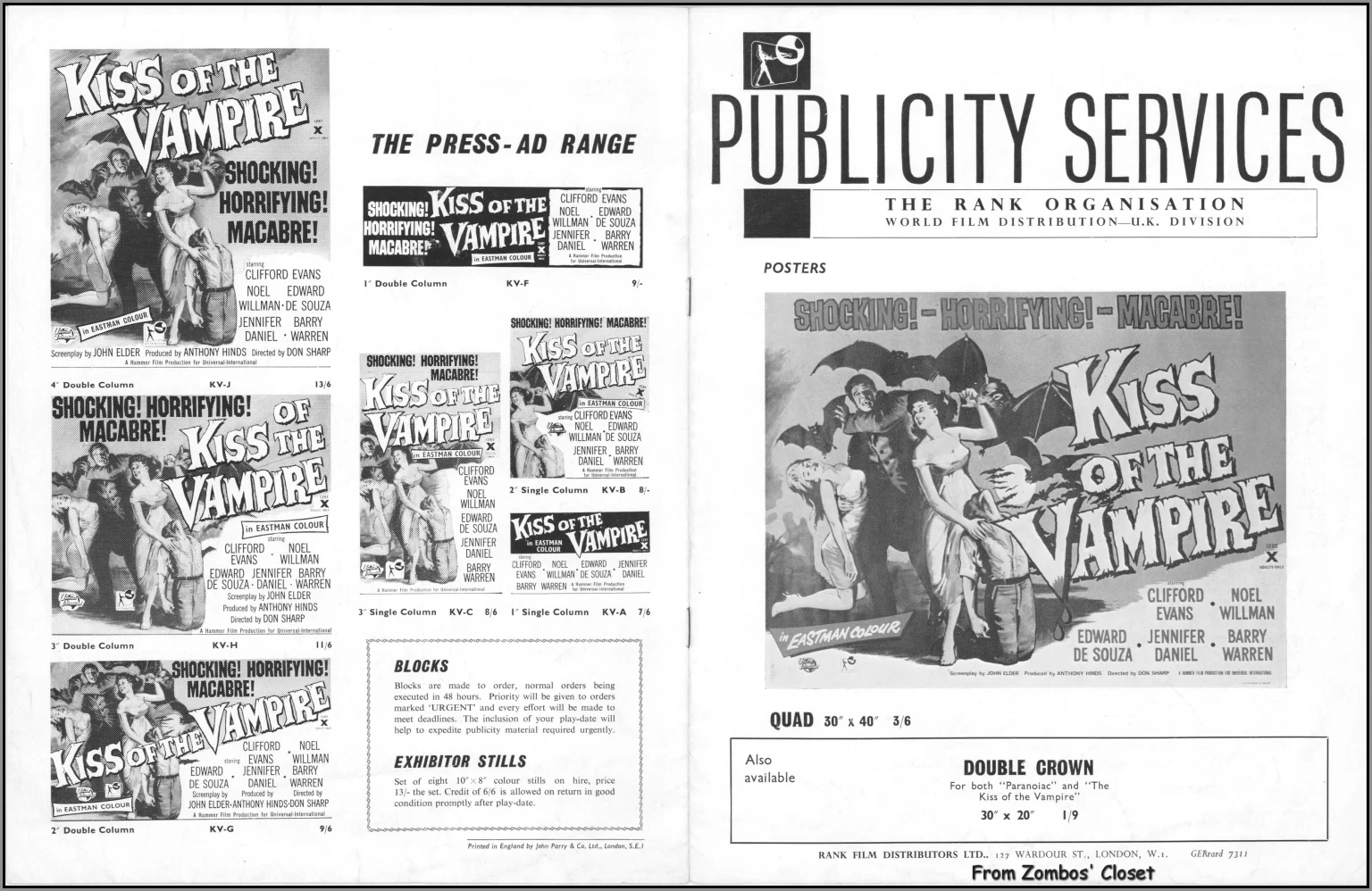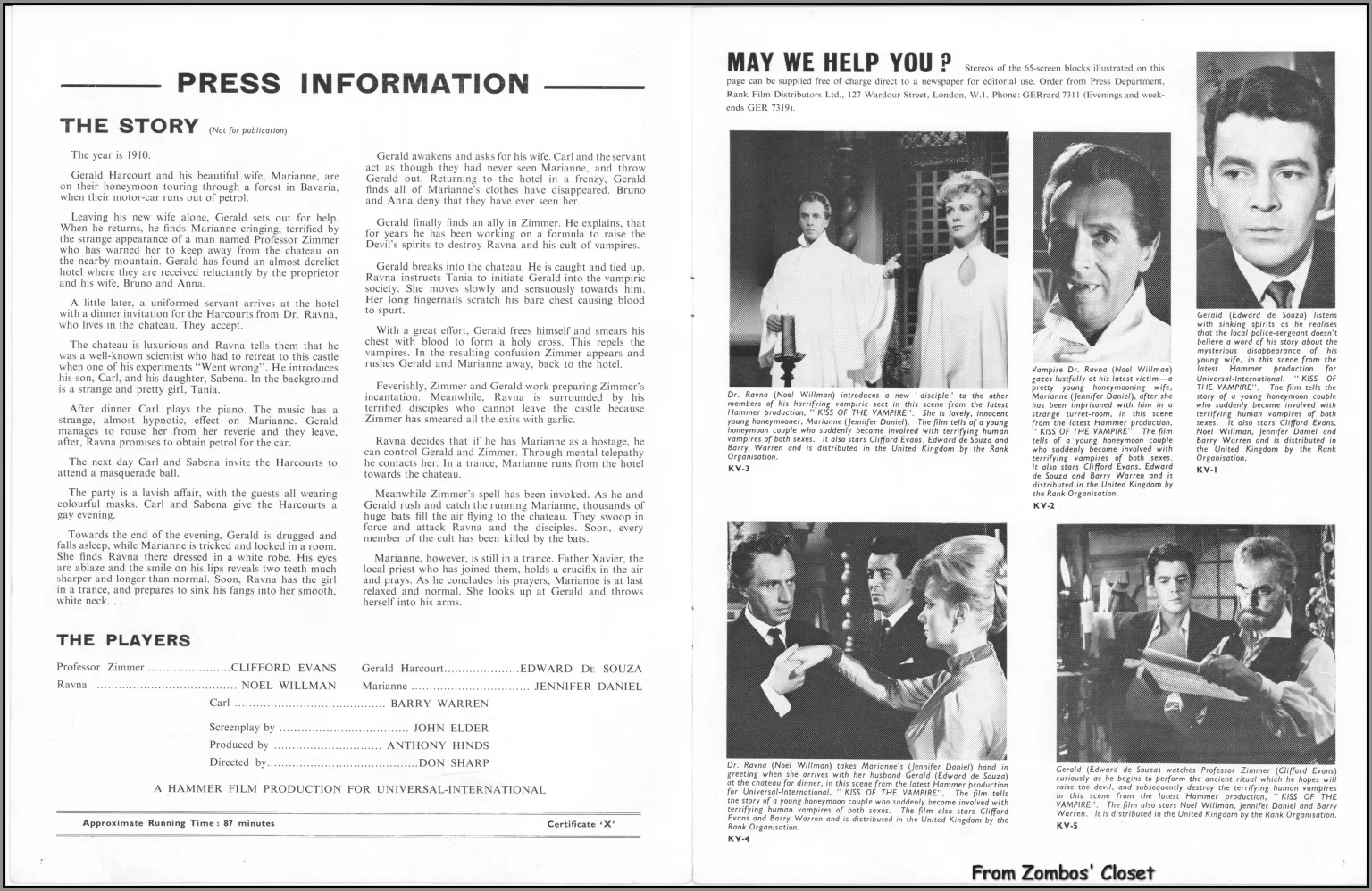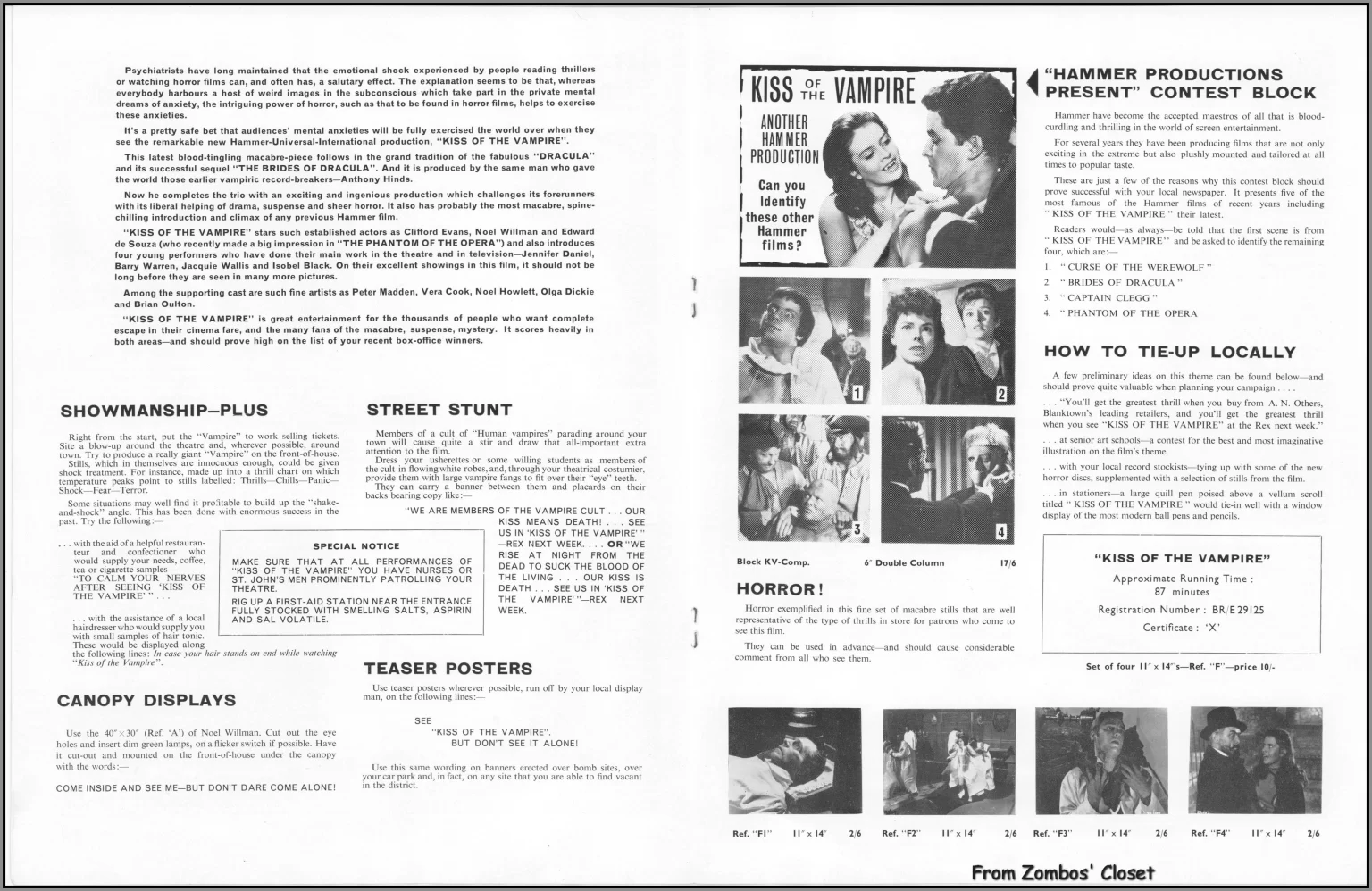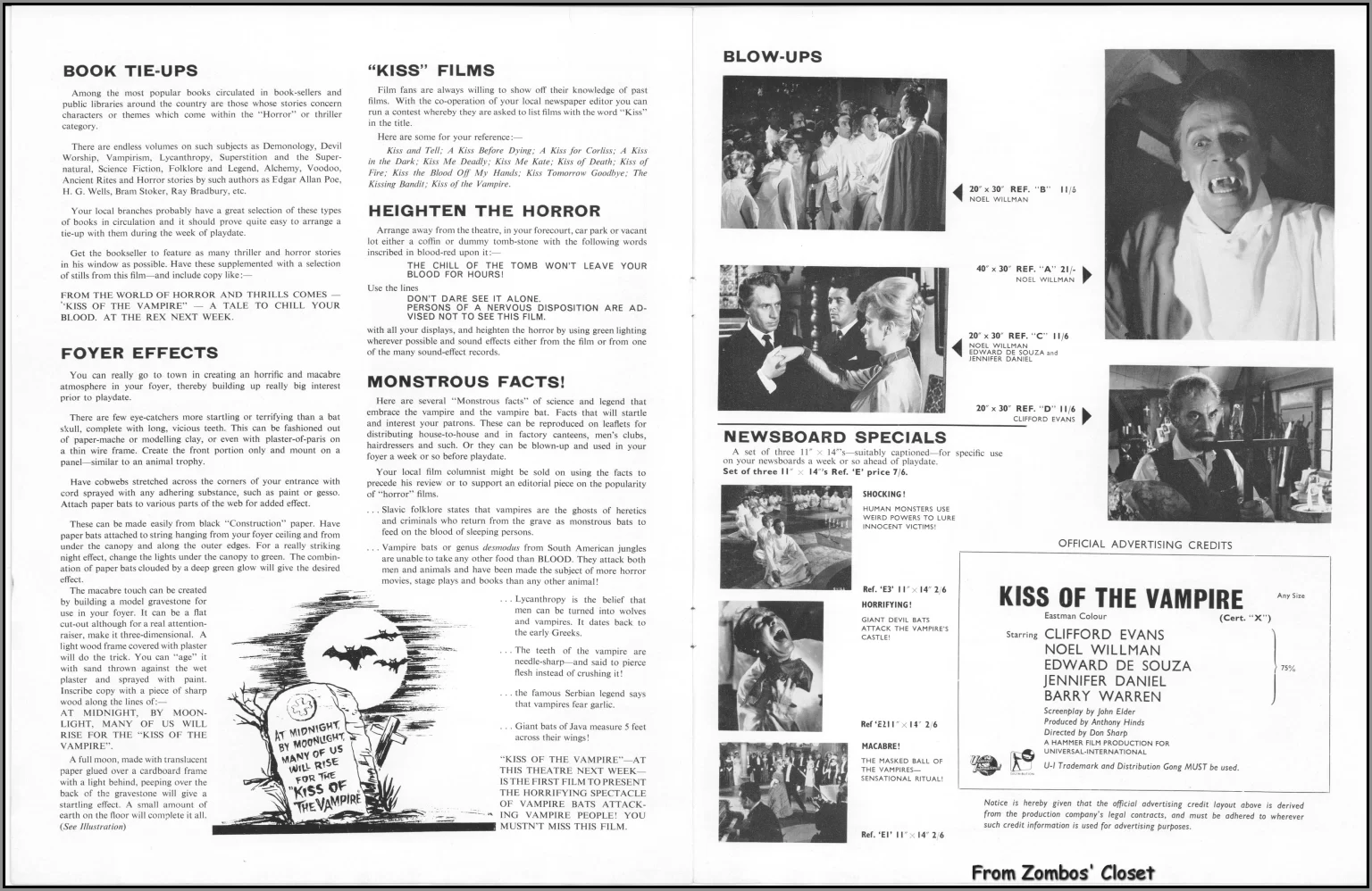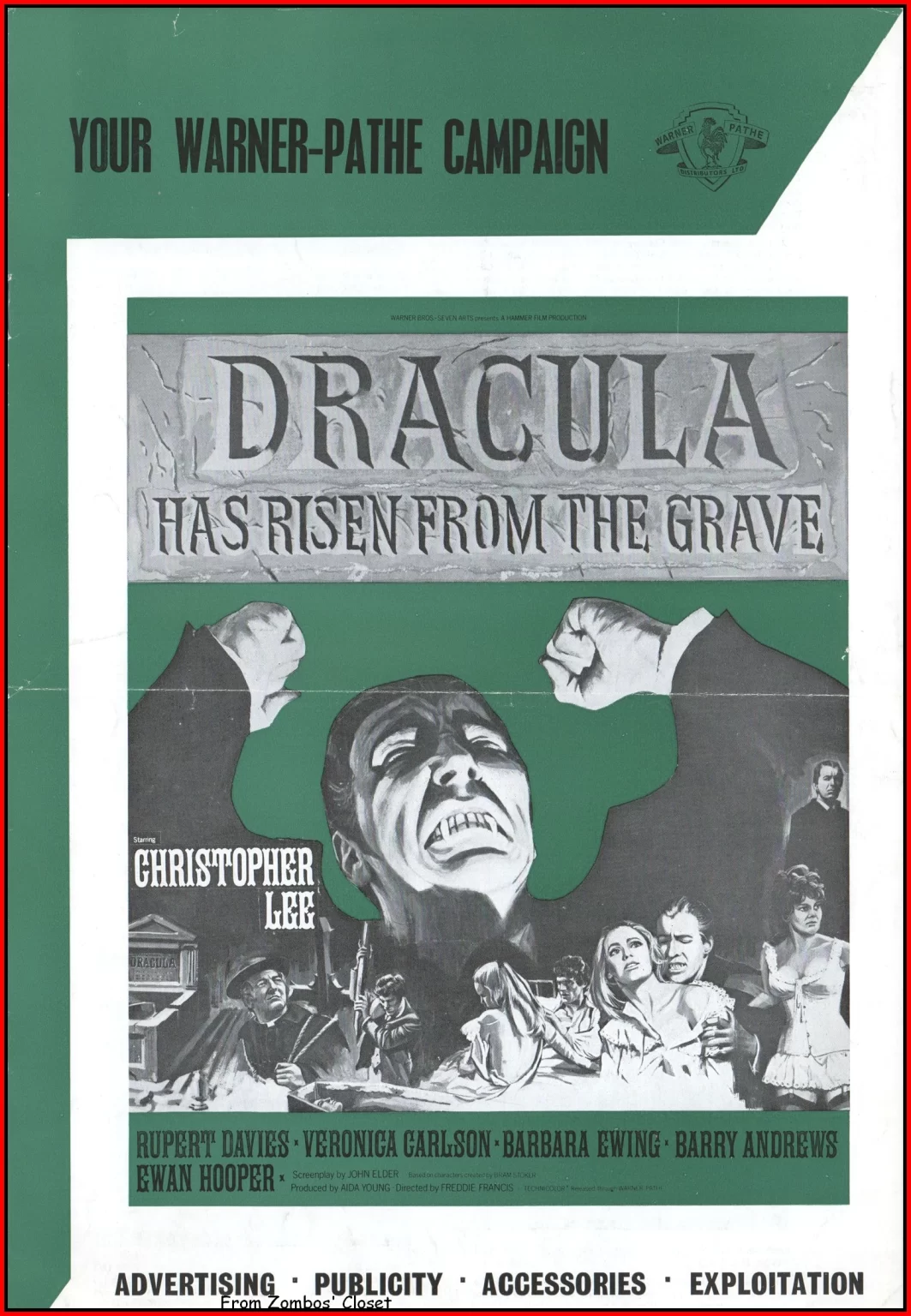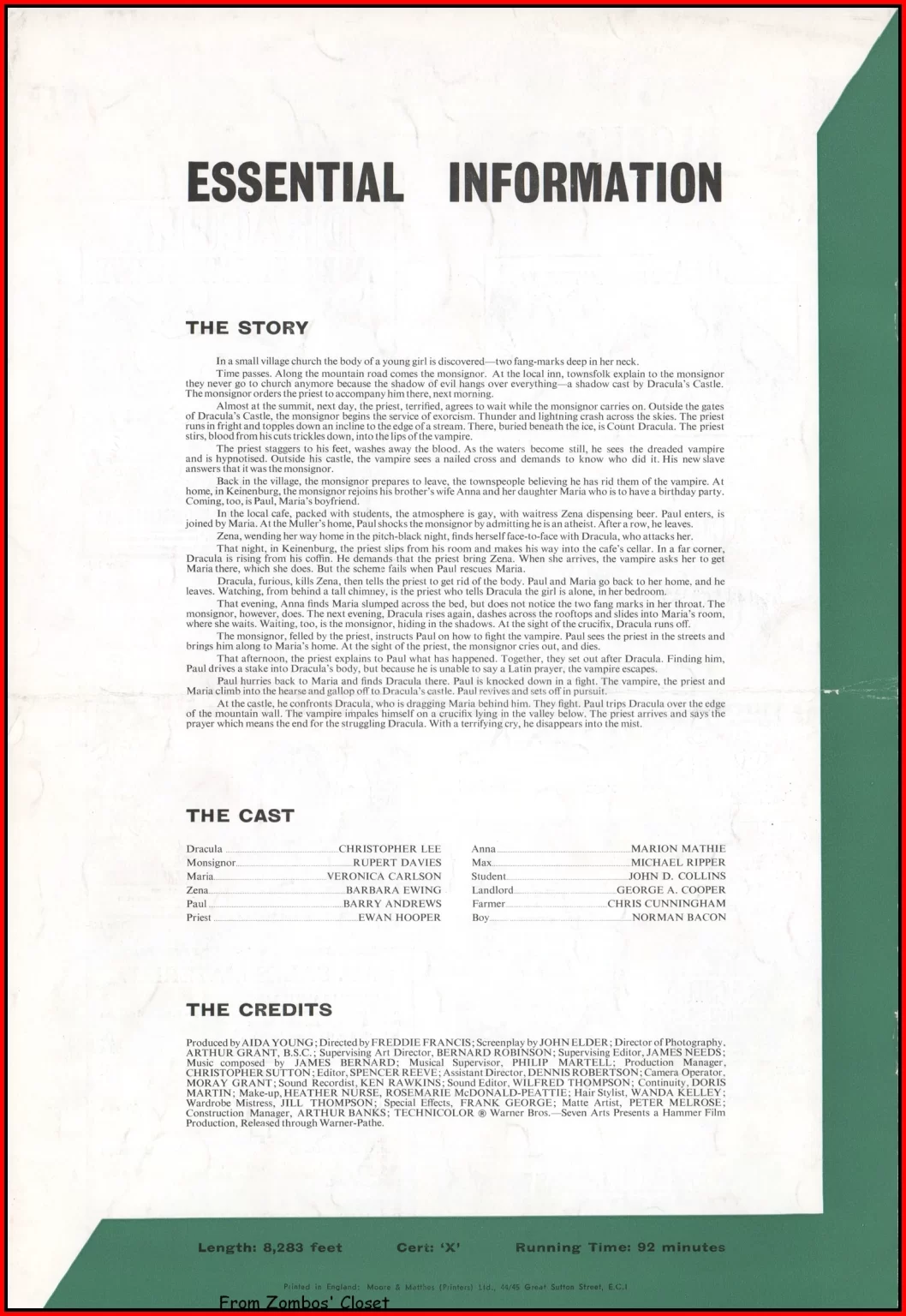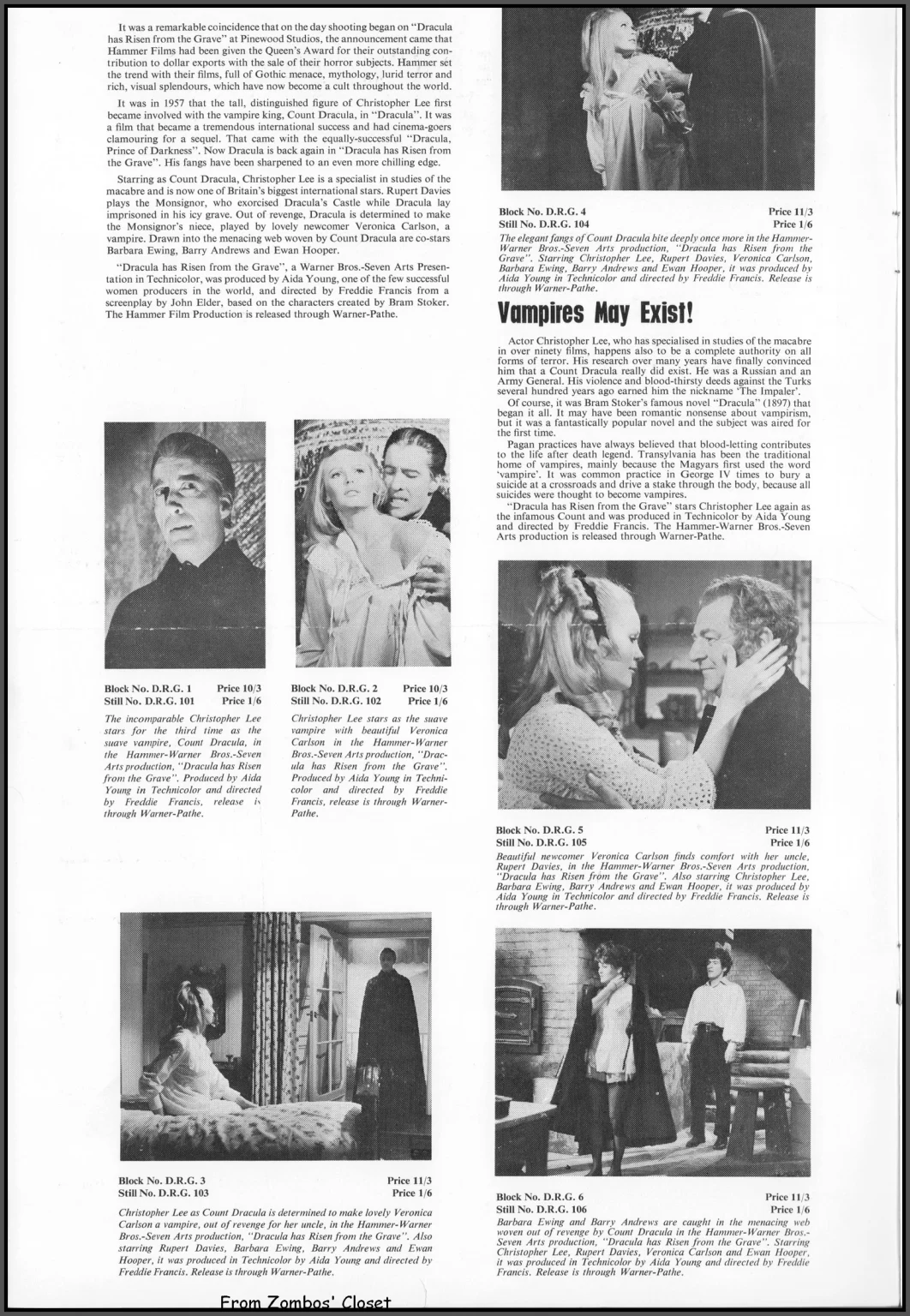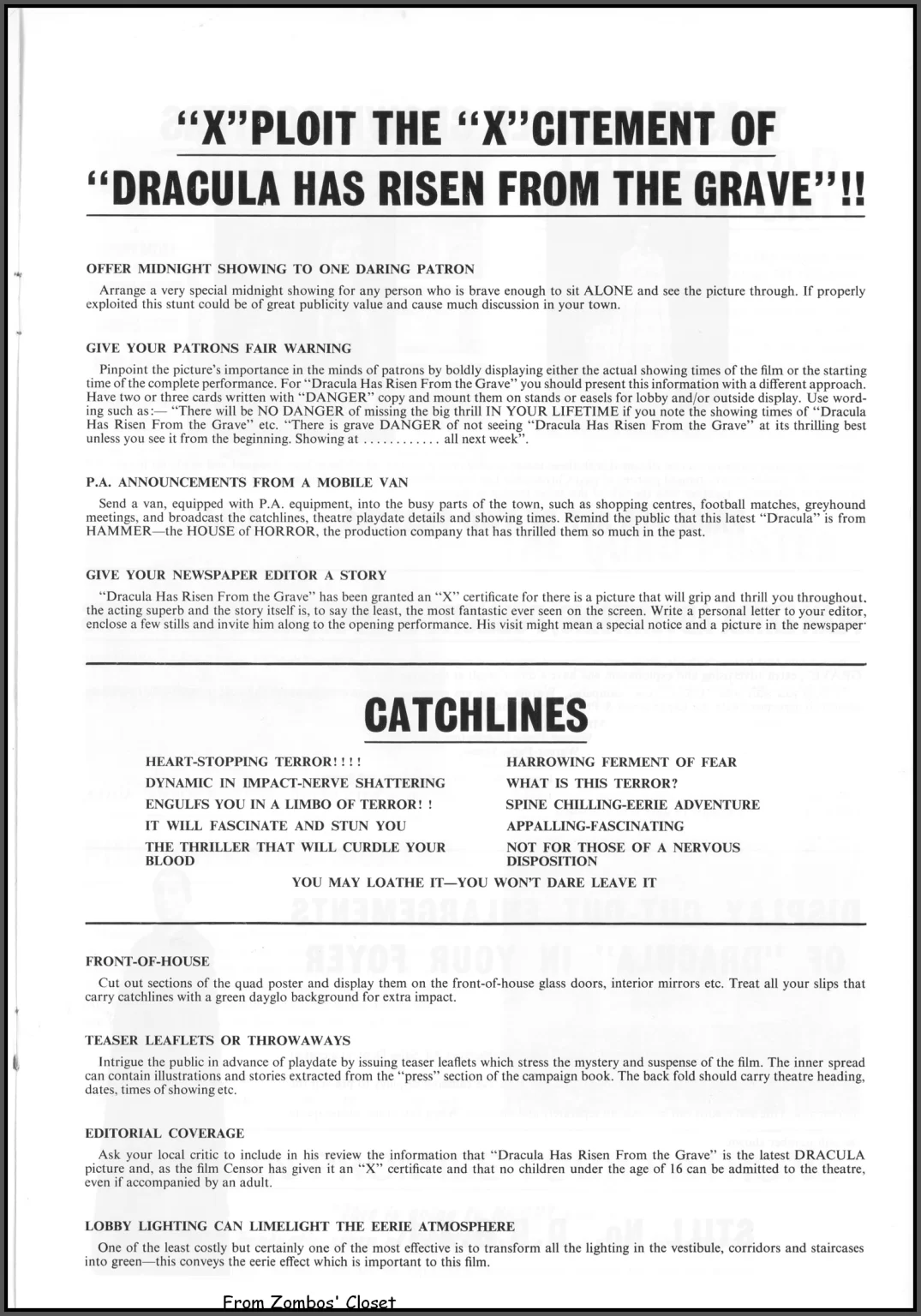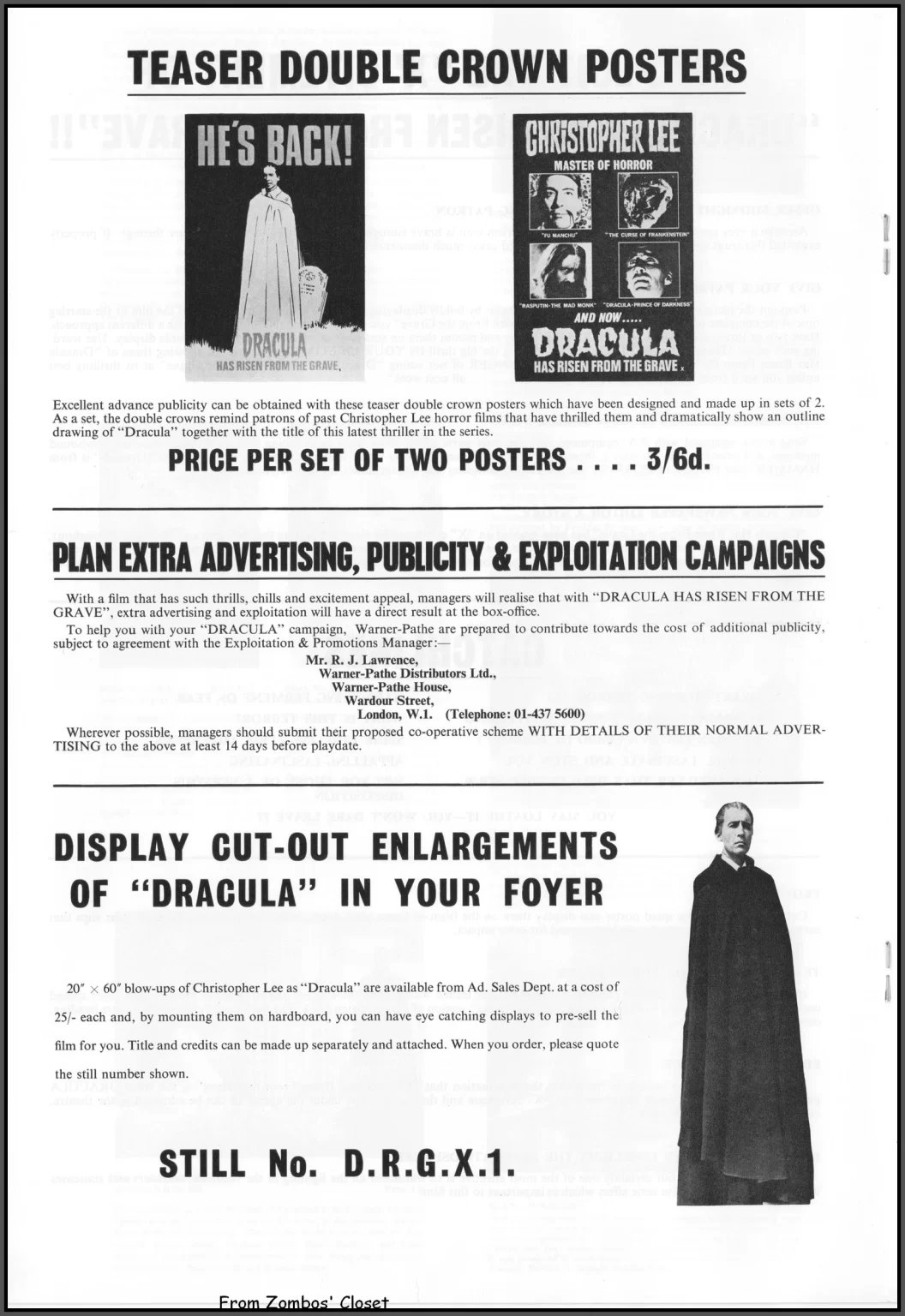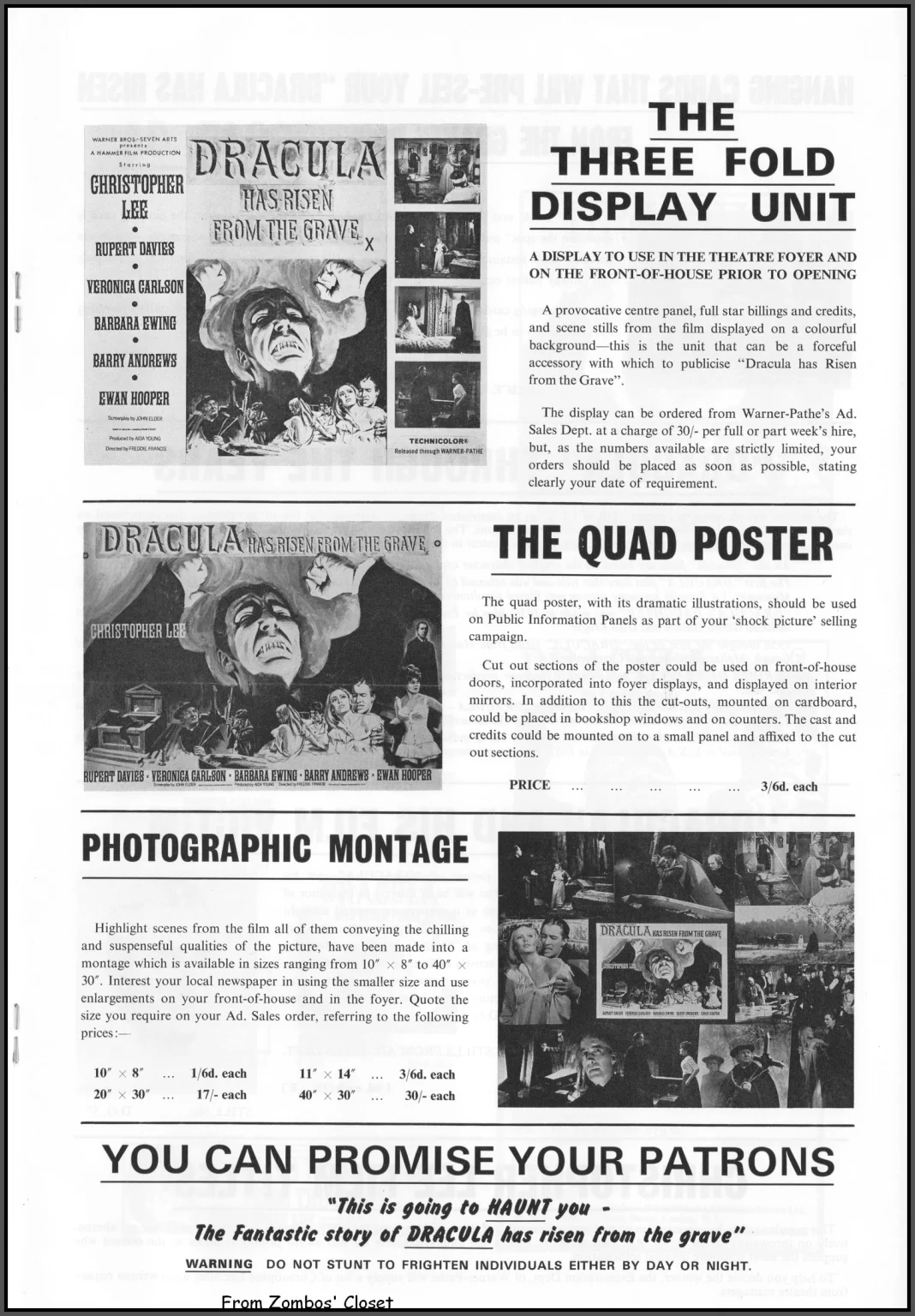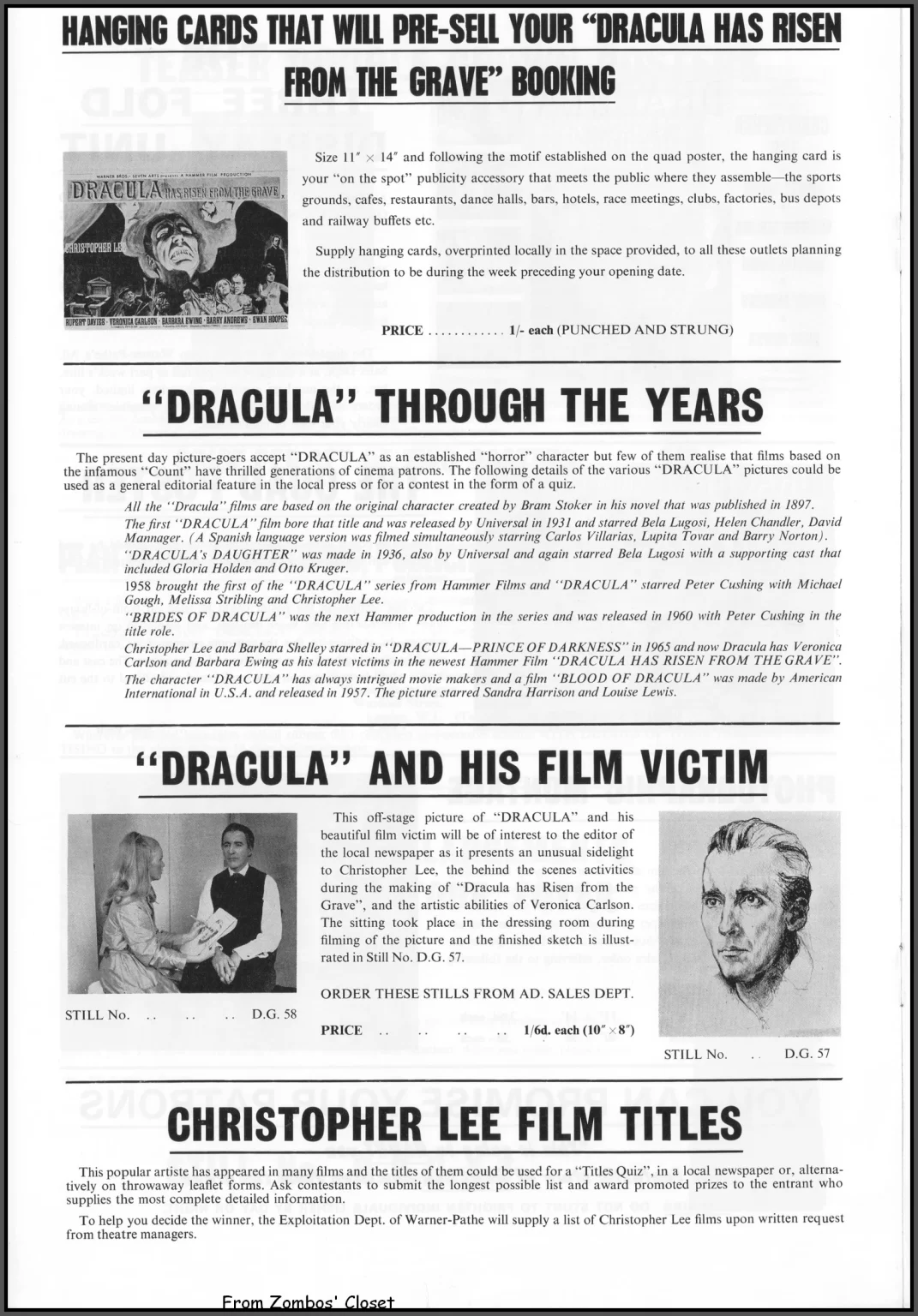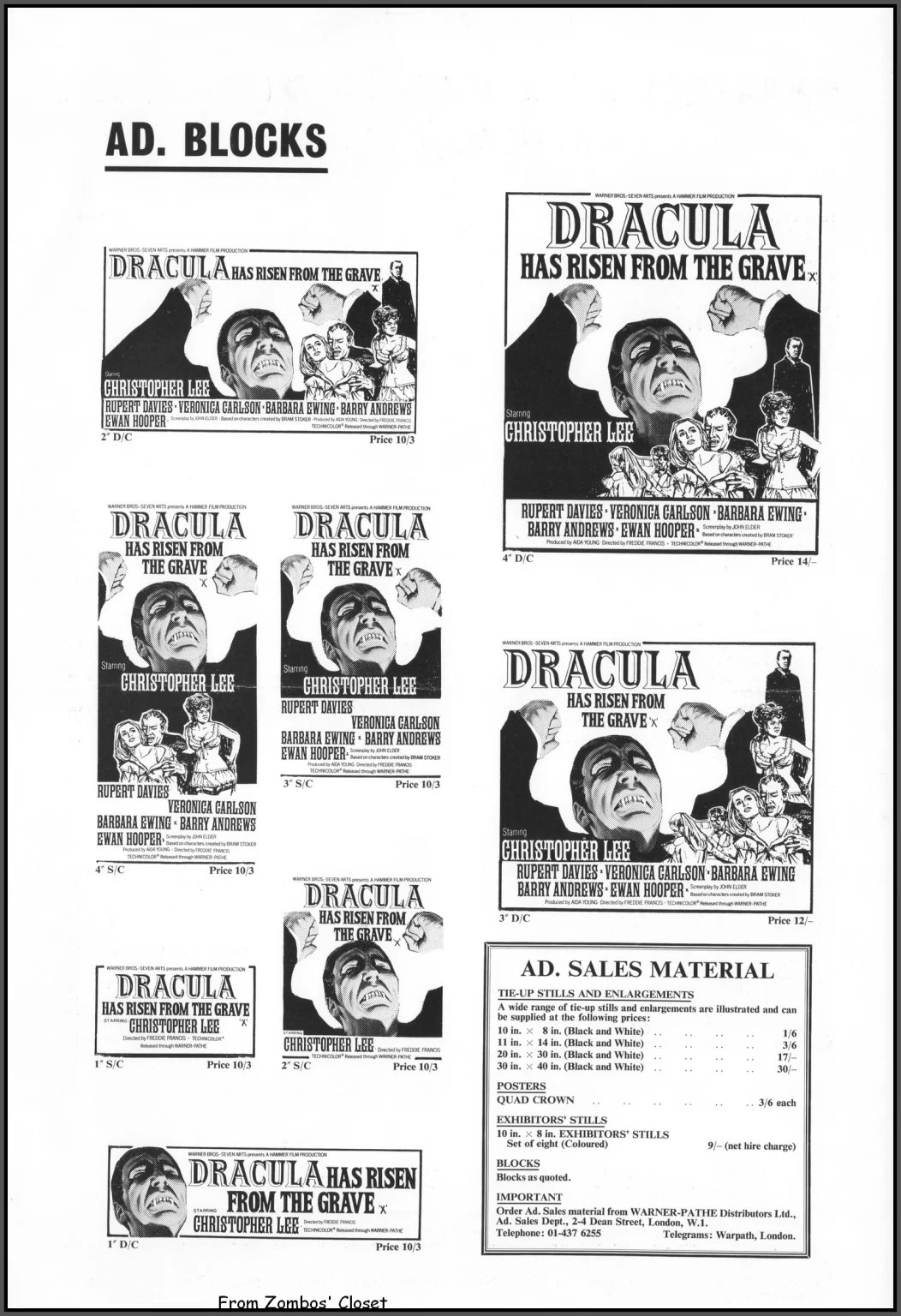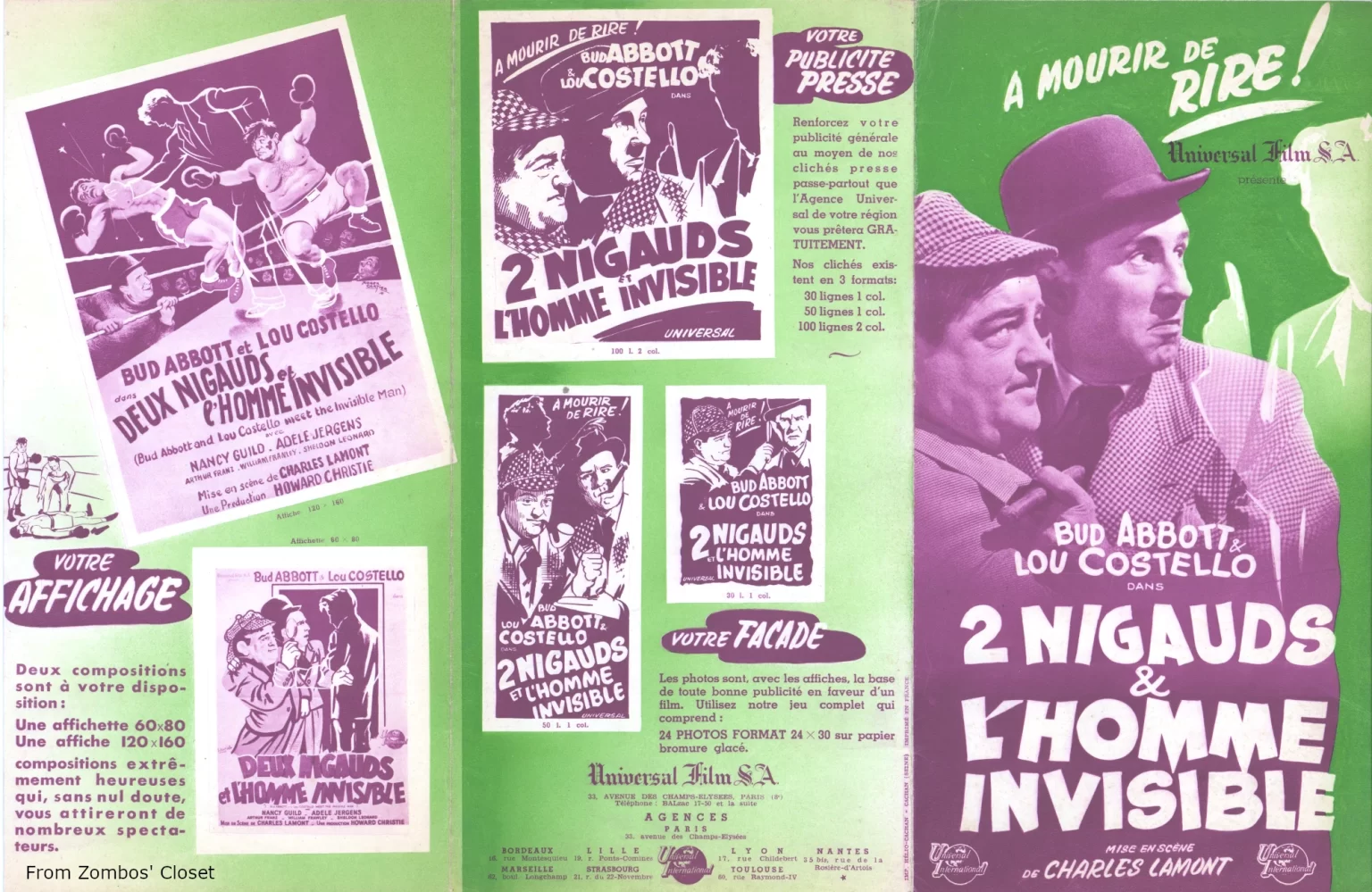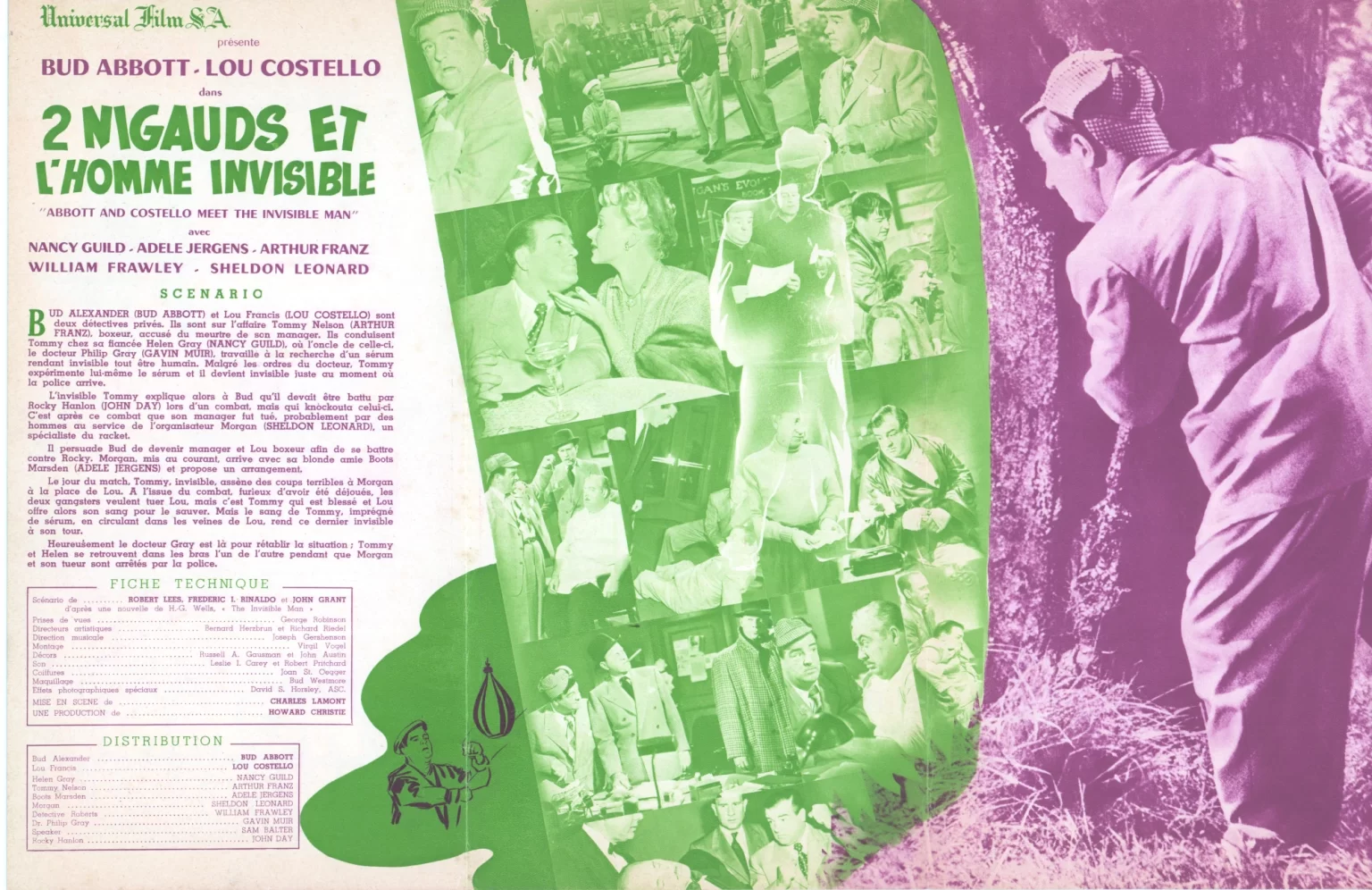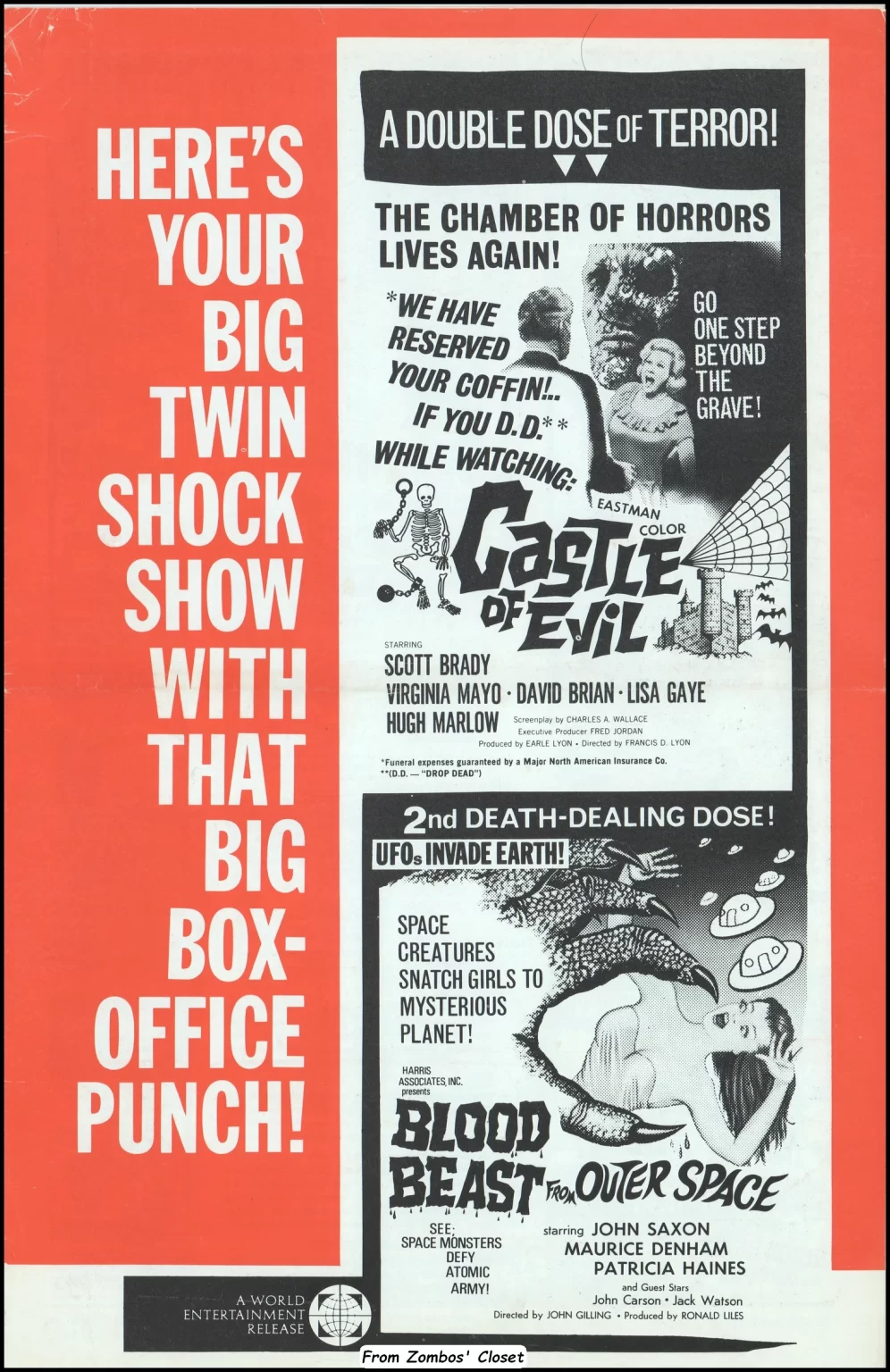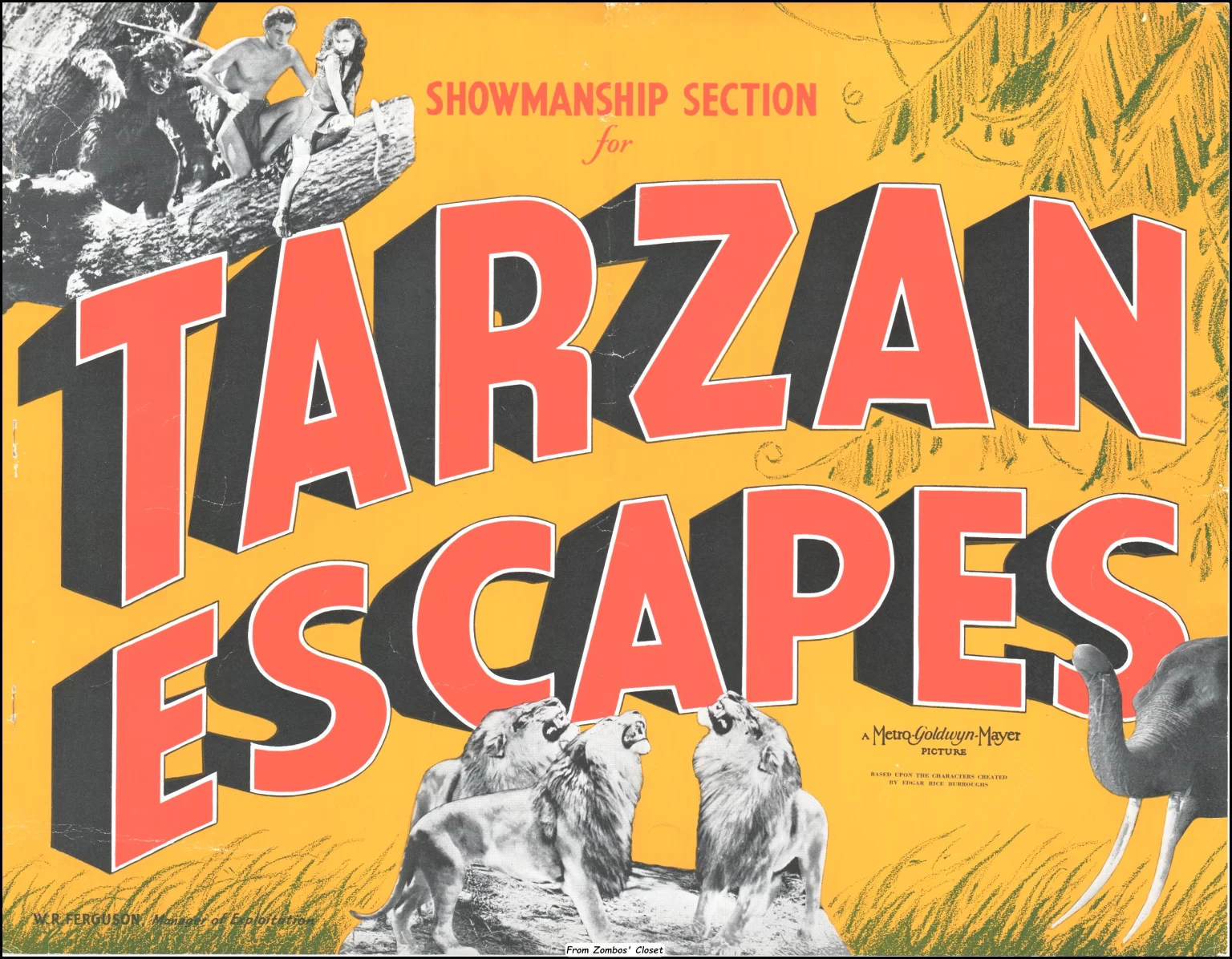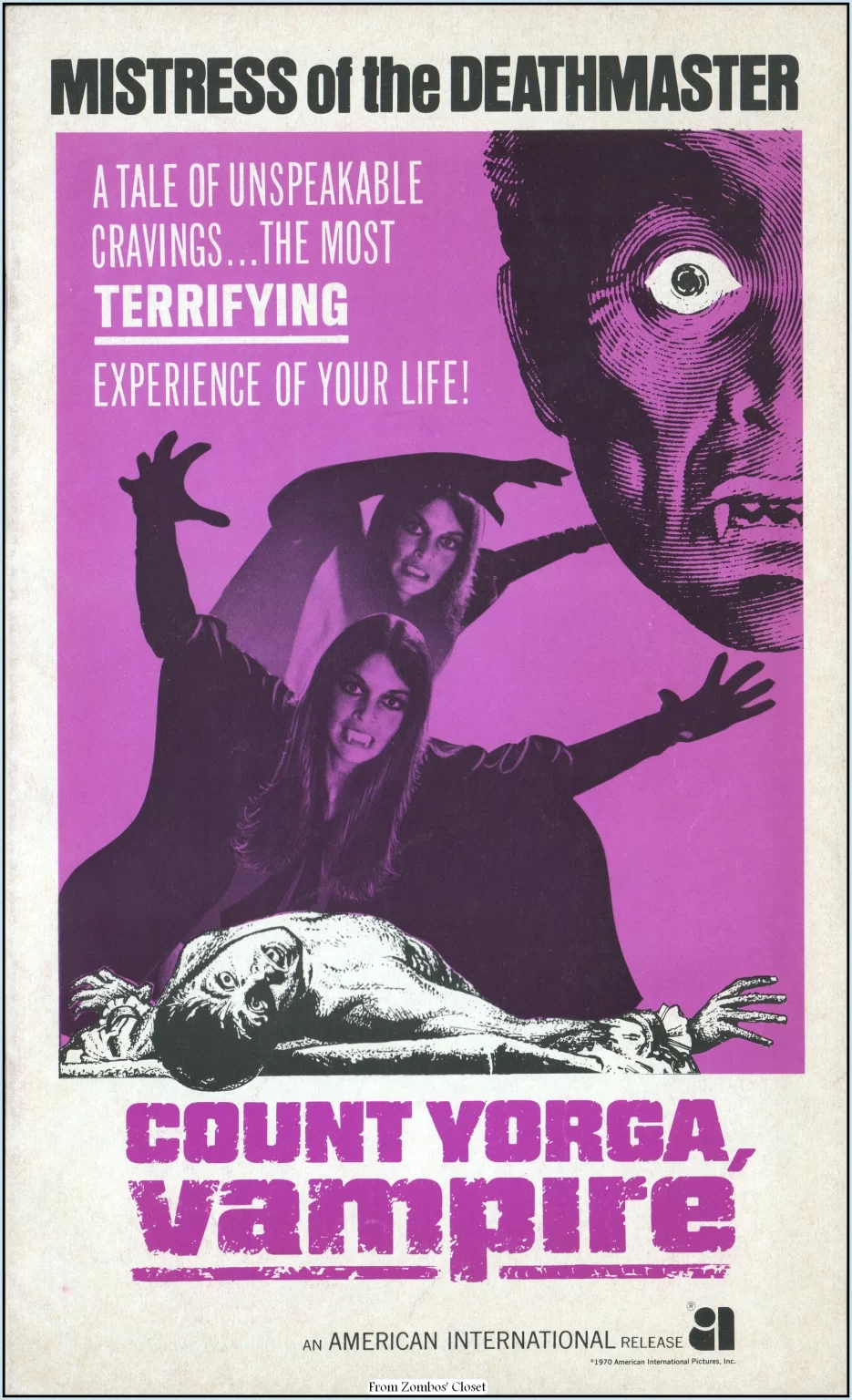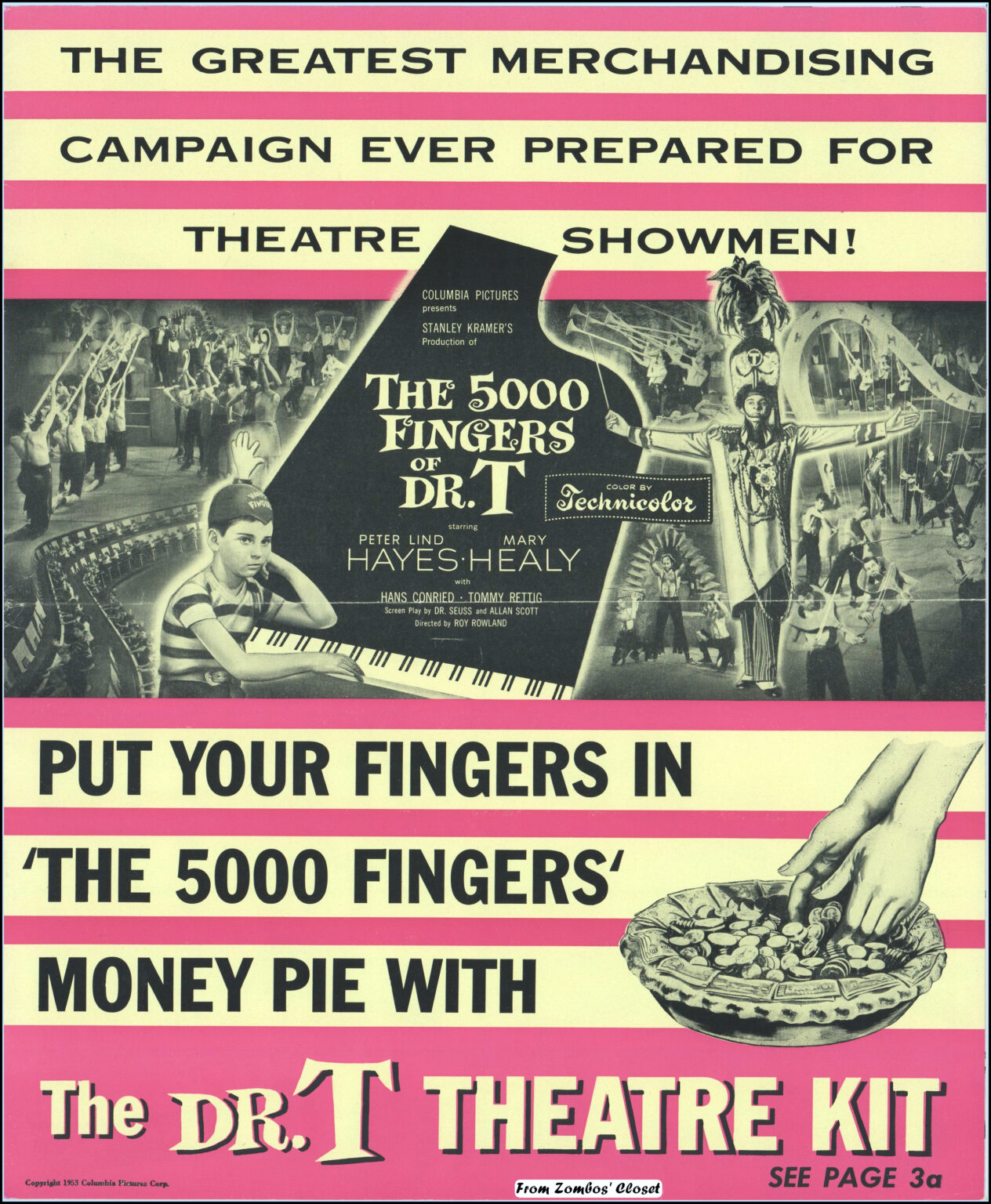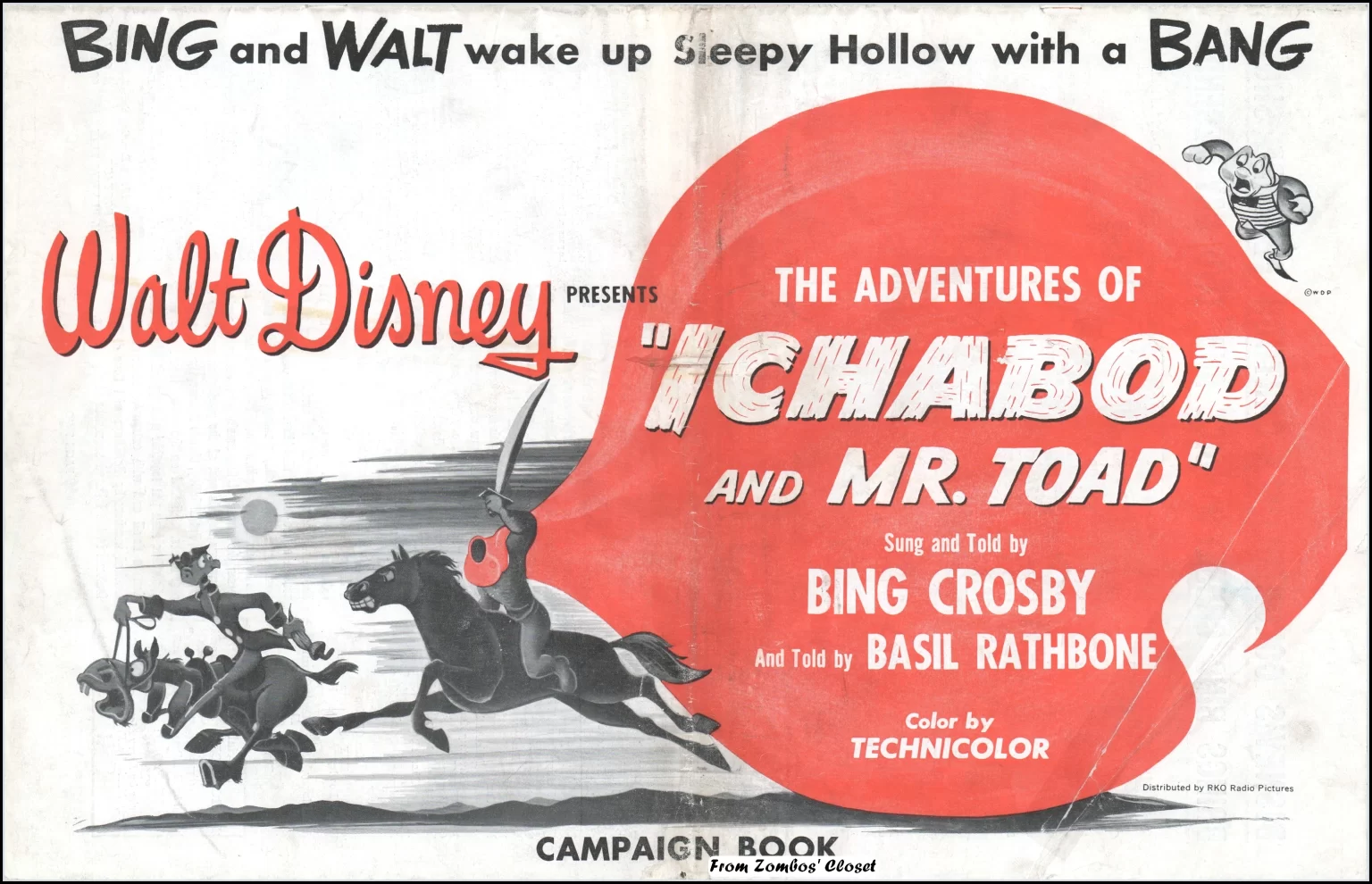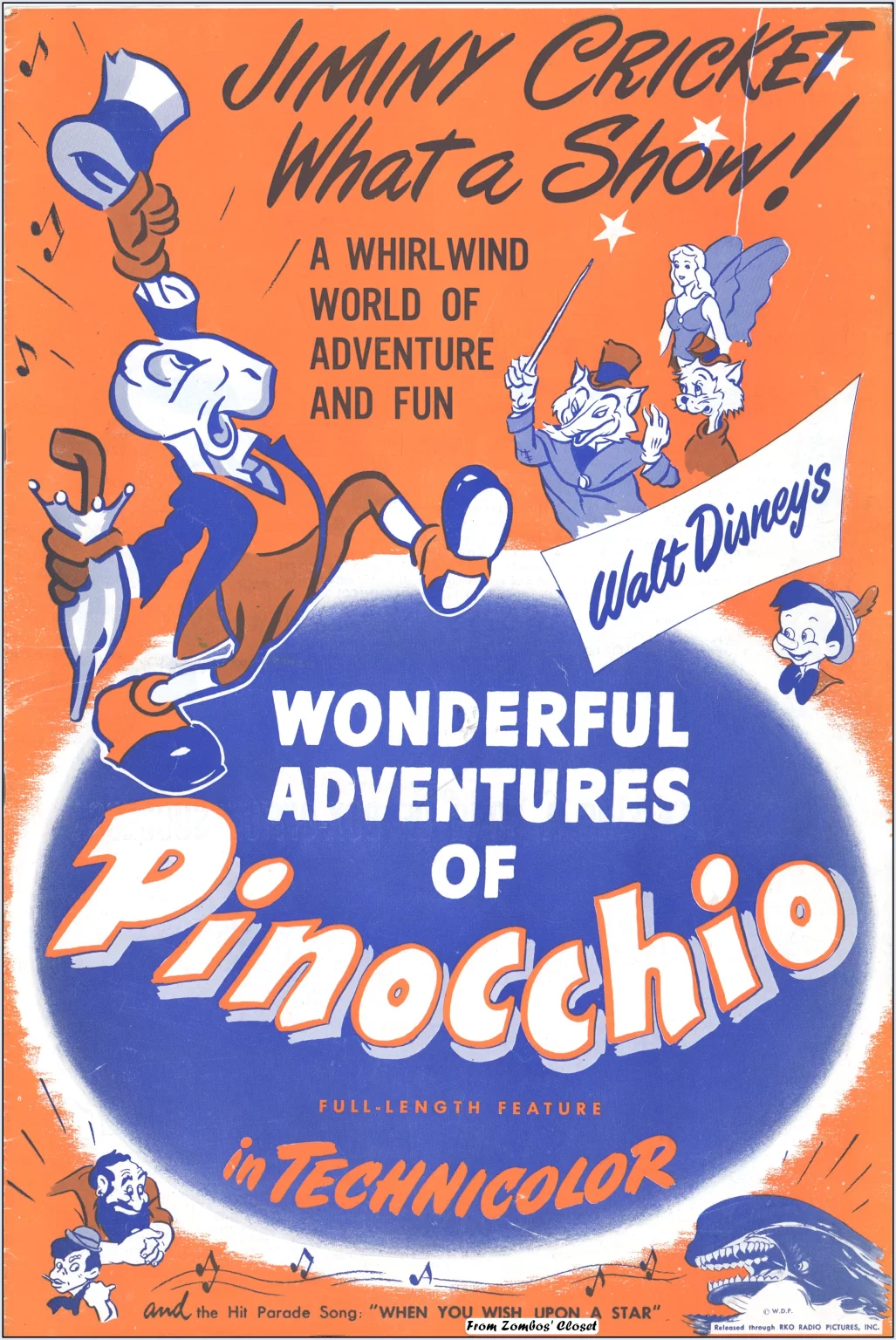Kiss of the Vampire (1963) UK Pressbook
While Van Helsing and Dracula are missing from this Hammer horror, the story switches up vampire lore to create a cult of vampire worshippers looking for some fresh blood. Newlyweds soon find themselves up against the evil, but are saved by Professor Zimmer (Clifford Evans) who turns the tables on the cult by putting them on the receiving end of the bloodletting. This film and The Devil Rides Out are two lost opportunities for Hammer to expand into interesting follow up movies with both the Professor here and Christopher Lee’s excellent Duc de Richleau, and leaning into more occult-themed horrors. For American audiences the movie was retitled Kiss of Evil (for television) and heavily edited for violence. The finale is somewhat of a letdown only due to the special effects for the time, but the production values of Hammer were always well executed on small budgets. One wonders what the movie would have been like if Peter Cushing and Lee could have taken up their classic roles for this one.

